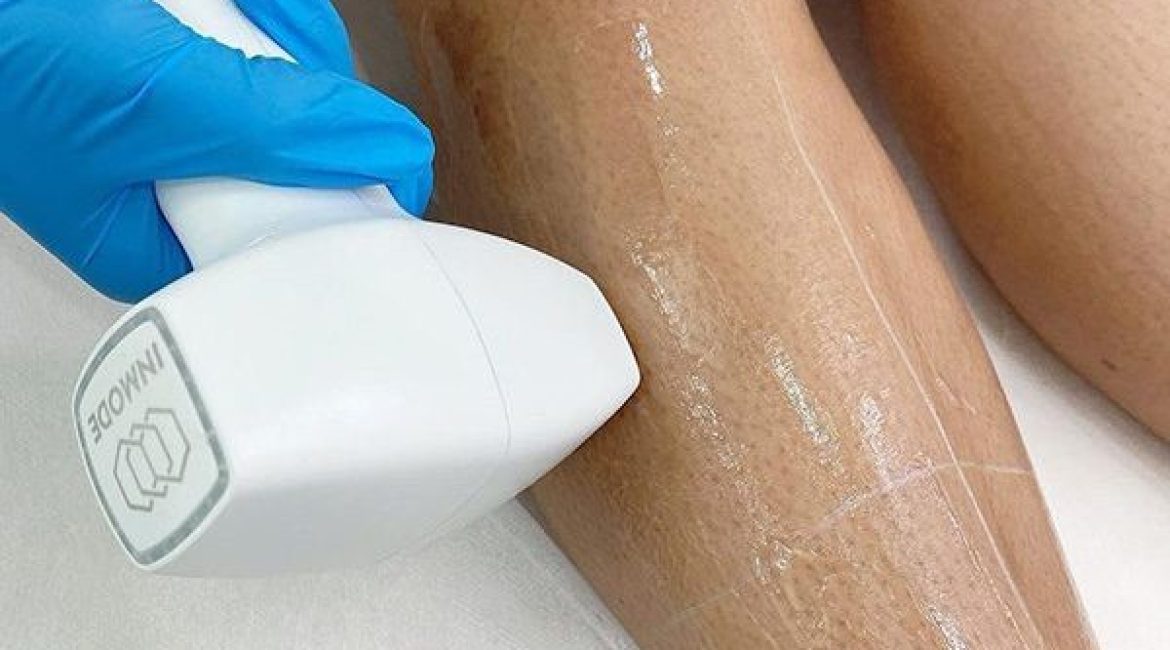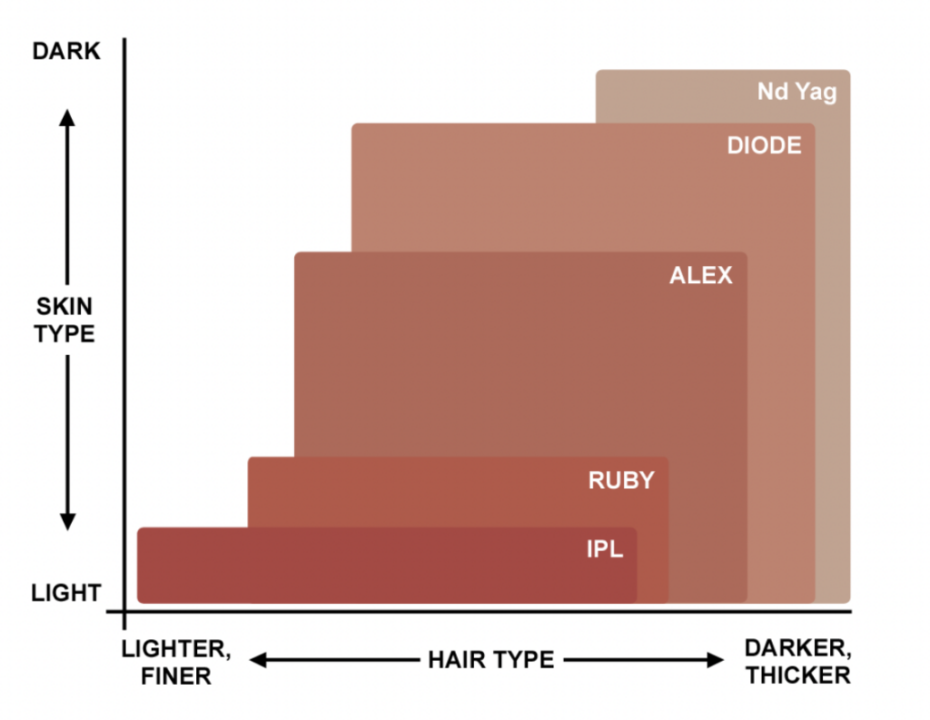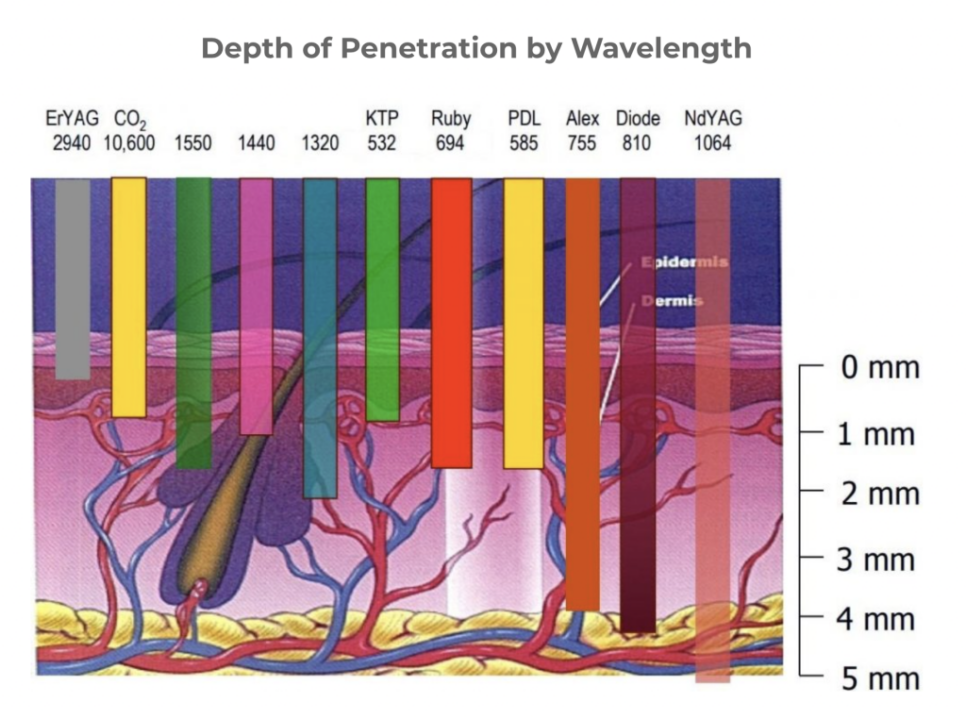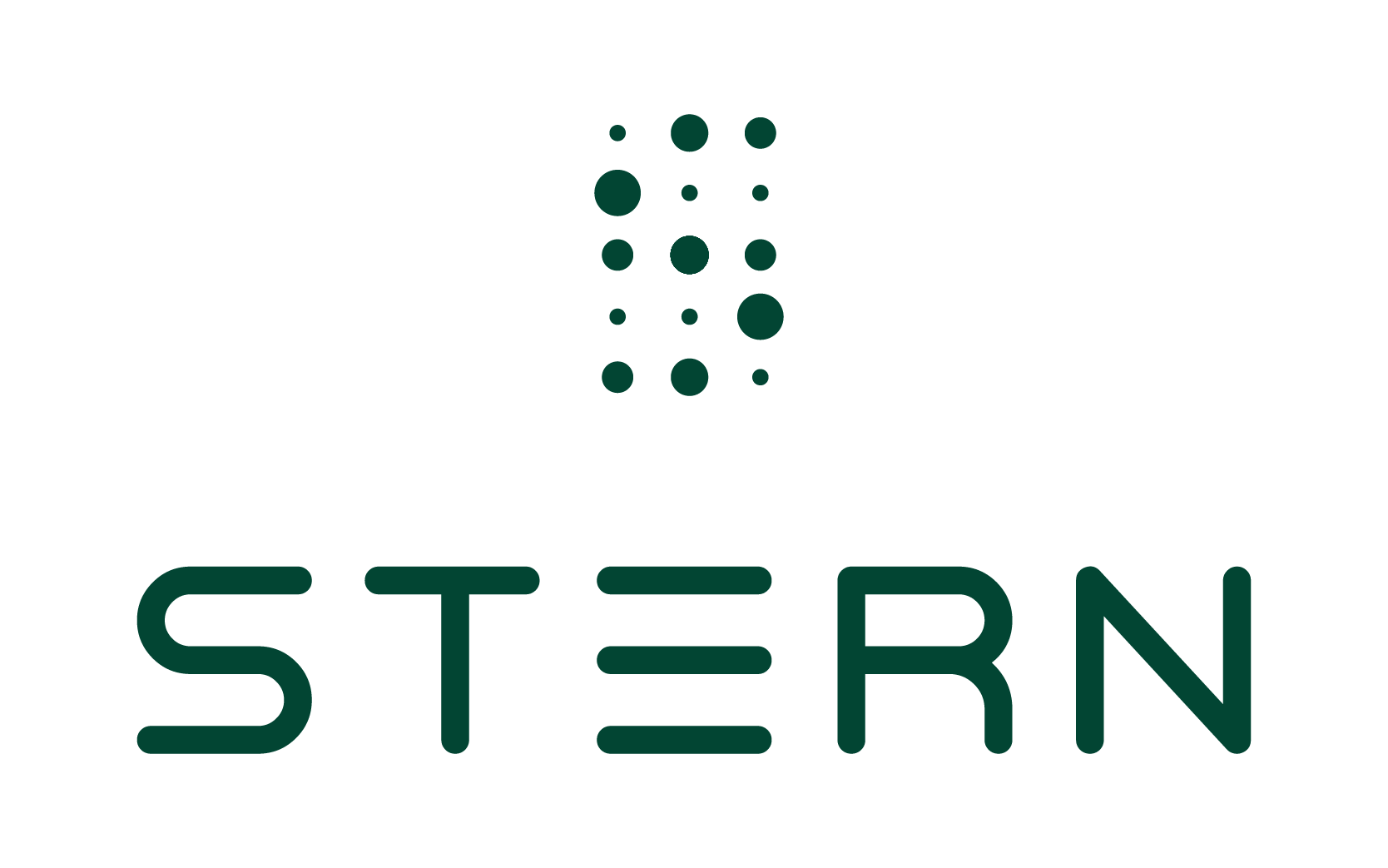
Unwanted hair is a common problem that can be a source of frustration and self-consciousness. In recent years, the demand for a more permanent solution (aka laser hair removal) has sky-rocketed. However, not all laser hair removal technologies are created equal, and not all are suitable for all skin types. In this blog, we’ll explore the differences between laser hair removal technologies and why choosing the right one is crucial for achieving the best result.
When it comes to laser hair removal technologies, there are many options. The five most common types of hair removal laser systems include the Ruby, Alexandrite, IPL, Diode, and Nd:YAG.
To understand each technology better, it is important to be aware of the 4 laser parameters that play a significant role in the effectiveness of treatment:
- Wavelength
- Pulse Width
- Spot size
- Fluence
Ruby Laser (Skin Type I-III)
The ruby hair removal laser was the first system developed for permanent hair reduction and not well-known in South Africa. This system uses a shorter wavelength of 694nm that targets melanin. This makes the ruby laser more effective for lighter skin types with dark hair and is not recommended for individuals with darker skin tones.
Alexandrite Laser (Skin Type I-III)
The alexandrite laser is a popular option amongst aesthetic clinics and delivers great penetration for good results. Alexandrite may not be the most comfortable technology for patients, but latest equipment have built-in cooling devices to improve patient experience and to minimise discomfort. The alexandrite laser operates at a shorter wavelength of 755nm, making it ideal for targeting melanin in the hair follicles of individuals with light to olive skin tones.
Diode Laser (Skin Type I-V)
Diode equipment’s energy source consists of semiconductors, known as diodes, grouped together to create a laser beam with a wavelength of 800-810nm. This is a longer wavelength, better for penetrating deep into the hair follicle. This makes the diode hair removal laser system popular among men seeking treatment to remove back hair or chest hair.
Nd:YAG Laser (Skin Type I-IV)
Nd:YAG systems provide the latest advancements in aesthetic laser technology. Besides effective hair removal lasers, this system offers numerous applications including tattoo removal and laser skin resurfacing for the correction of sun damage. Nd:YAG systems operate at a wavelength of 1064nm and is safe for all skin types.
IPL
IPL laser hair removal does not utilise a true laser, but the equivalent in the form of intense pulsed light (IPL) like lasers, IPL’s initiate photothermolysis by pulsing thermal energy that is absorbed by melanin in the hair follicle. The advantage of intense pulsed light is a customisable wavelength, energy level, and pulse duration. However, higher risk for epidermal damage and less effective than other lasers.
Still unsure which technology to opt for. The below graph & illustration best explains the effectiveness of each technology.


Now that you understand each technology, I know what you are thinking: “Why can’t we combine all the technologies together to get the best of all them all?”
Well, maybe not all of the technologies, but have you heard of a dual wavelength device? The gold standard in laser hair removal and our technology of choice is alexandrite combined with Nd:YAG.
Next time you book a laser hair removal session, check what technology the clinic utilises to ensure maximum results.
Our device of choice: Clarity II by Lutronic
P.S. One last very important variable to remember is that a high quality laser must be accompanied by a skilled operator for superior results.
